Cambodian hunters tarantulas
• Cambodian hunters tarantulas
Deep in the jungles of the Cambodian province of local Svey Leur Rit hours every day hunts tarantulas. His prey, he sells the nearby restaurant, located near the town of Siem Reap where the world famous temple of Angkor Wat. A tarantula costs 500 riels (about 12 cents) per share.
For many generations of Cambodians hunt these large spiders, using them for purposes of traditional medicine, as well as eating. However, a common dish tarantulas in Cambodia began only in the mid-1970s, when famine during the reign of the Khmer Rouge forced the people have everything that came to hand. Despite this bleak beginning, spiders are considered a delicacy today and sold in markets and restaurants across the country. Tarantulas not only rich in protein but also contain folic acid and zinc, and more Cambodians believe that they have medicinal properties.
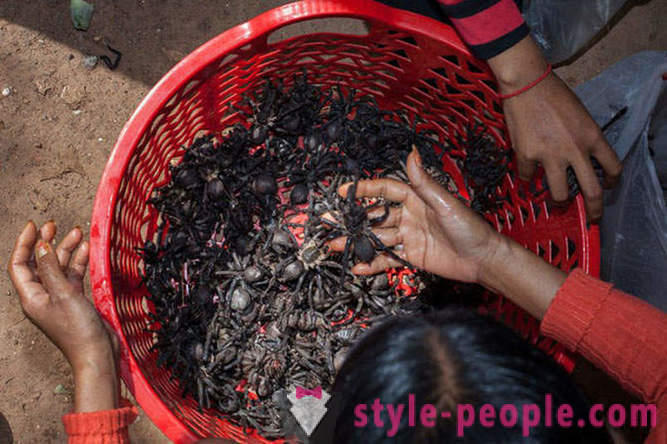
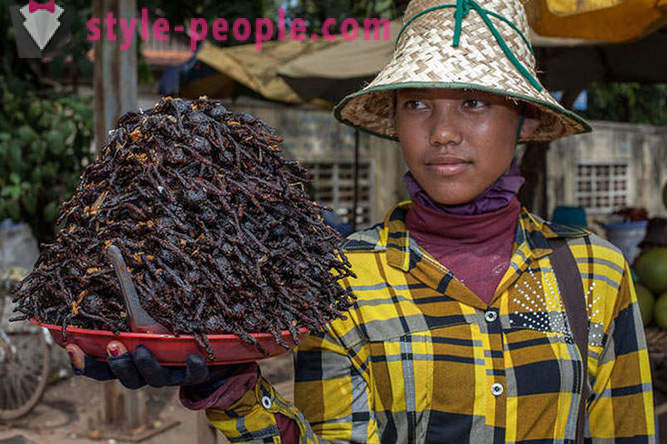
To catch the spider, Rit wet end of a small stick with gasoline and puts it in a spider's nest. The smell of gasoline kicks arthropods outside, making them easier to catch, not thrusting his hand inside. In the photo: a young hunter spiders with a tray already prepared production, ready for sale. (Omar Havana)

Although a tarantula bite, hunted Cambodians, not lethal, hunting can still be quite dangerous. Riet explains that hunters sometimes mistaken for spider nests of other holes, and there are scorpions or snakes. Moreover, these types of spider bites, though not fatal, but very painful. Photo: Rit, hunter spider from a small village in Svey Leur, looking for their prey in the Cambodian jungle. (Omar Havana)

The long war in Cambodia has left a terrible legacy - the set of anti-personnel mines; according to some estimates, the country is now set from 4 to 6 million mines. Photo: Hunter family on spiders in the search for nests. (Omar Havana)

But in a country where more than 20% of the population lives on just $ 1 a day, the risk is justified for many people. A good hunter can catch about 100 spiders per day, which is almost 12 dollars in revenue. Photo: Rit rake spider's nest. (Omar Havana)
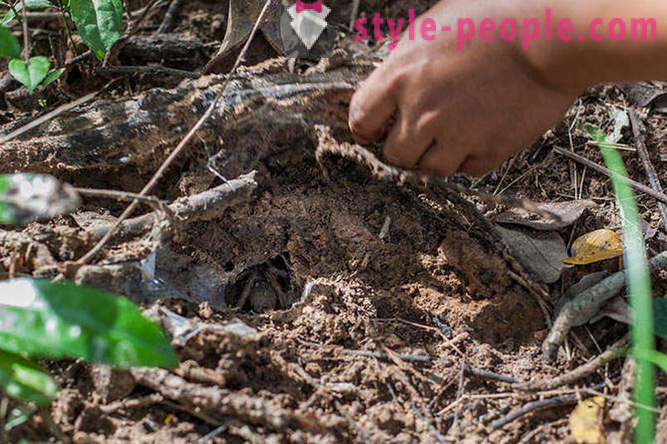
"Many spiders catch to earn, but for me, this is a hobby - said Reith. - I like to eat spiders. It's like fishing for those who like to fish. We enjoy a long hunt in the woods, and in the evening may well sit eating our "catch" in the company of friends over a mug of cold beer. " In the photo: the hunter prepares to catch a tarantula with his bare hands. (Omar Havana)

One of the most popular places where you can find a tarantula, a market Skuon, about 75 km from the capital Phnom Penh on the way to Siem Reap. Skuon has become a popular tourist attraction in recent years, and hence hundreds of spiders or resell to other markets in the neighboring villages or cook on the spot to serve in restaurants. Photo: Rit caught playing with the spider. (Omar Havana)
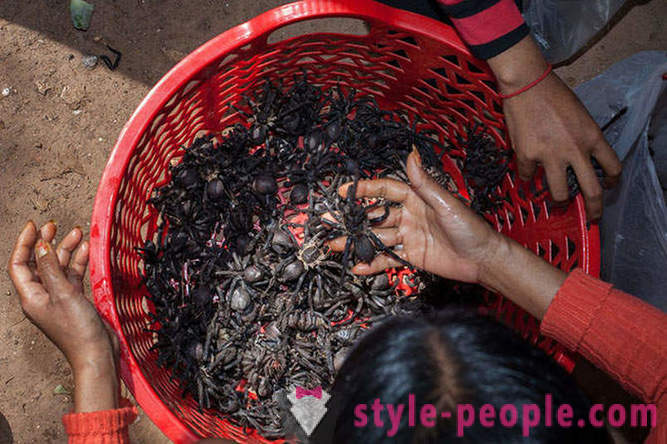
Although tarantulas can be cooked on the grill and serve with rice and vegetables, the most popular way to cook spider - season it with soy sauce, garlic, salt and even sugar, then fried until crisp. They say the abdomen, where the most meat - the best part of the spider, although the legs and tail are also eaten. Especially connoisseurs appreciate the females, as their eggs have a special aroma and taste. Photo: spiders seller in the market. (Omar Havana)

In Cambodia believe that tarantulas treat pain in the knees, back and breathing problems, and improve erections and increase energy. It is also believed that they can make women more beautiful. Usually the doctor marinate them in rice wine for a month before the sale. Photo: Chef prepares a tarantula for visitors. (Omar Havana)
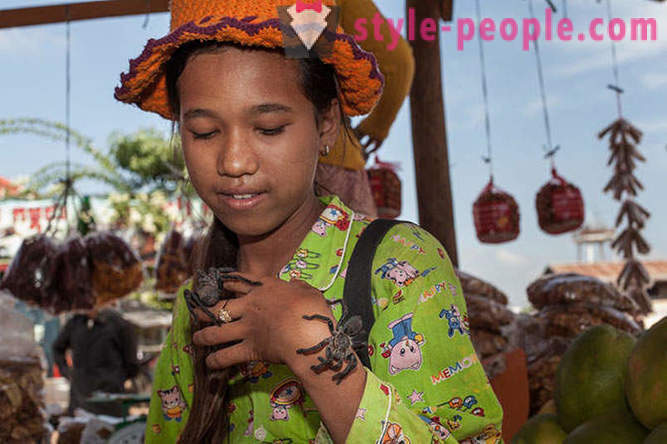
But perhaps the most bizarre application for tarantulas is that they are kept as pets for children of hunters. Rit said first spiders cut out mandibles, "to make it safer." In the photo: a girl playing with a few tarantulas in his family's shop near Skuon market. (Omar Havana)













































